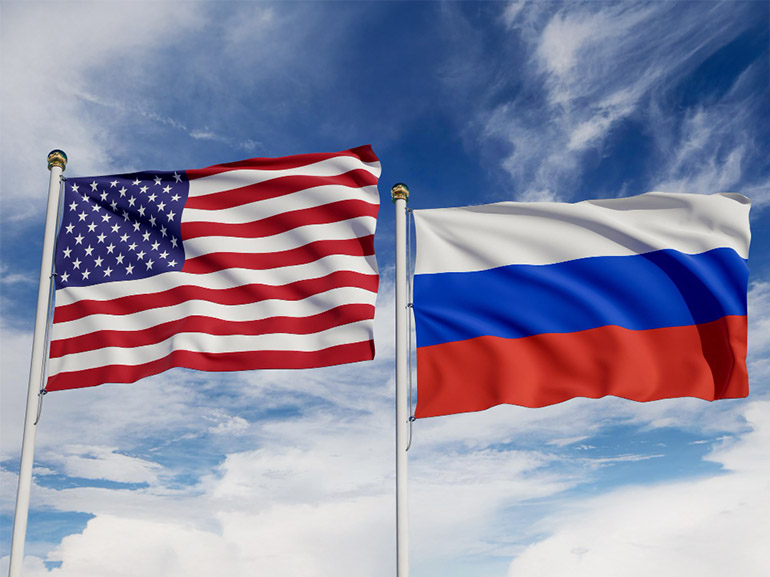US Strikes Iran: What It Means for the Markets
A key event took place on Saturday, 21 June, as US President Donald Trump announced on his social media platform, Truth Social, that the United States had "successfully carried out strikes" on three nuclear sites: Fordow, Natanz, and Isfahan.
This action sent shockwaves around the world, shaking global financial markets and igniting intense geopolitical concern.
In this article, we’ll explore how the US’s growing involvement in the Middle East conflict (particularly between Israel and Iran) is shaping the financial landscape and what key considerations traders and investors should keep in mind.

TL;DR
US strikes Iran’s nuclear sites on Saturday, 21 June, escalating the Israel-Iran conflict.
Investors brace for a surge in oil prices with risks of further rises if the Strait of Hormuz is disrupted.
Analysts project equities to dip, safe-haven assets like the US dollar and gold to gain.
Iran vows retaliation and halts nuclear talks under threat.
Investors face uncertainty, with inflation and global trade disruption possible if tensions grow.
US in Iran: The Details
Pre-Strike Diplomacy and Rising Tensions
In the days leading up to the strikes, Israeli officials informed the Trump administration they would not adhere to the two-week deadline set by President Trump for Iran to begin dismantling its nuclear programme.
There were divisions within the administration: Vice President JD Vance opposed direct US involvement, while figures such as Senator Lindsey Graham backed military support for Israel.
The US deployed B-2 stealth bombers to Guam, indicating readiness for possible action.
US Strikes on Iranian Nuclear Sites
On the night of 21 June, President Trump announced that US forces had struck three Iranian nuclear facilities (Fordow, Natanz, and Isfahan) using GBU-57 bunker-busting munitions.
Trump stated the aim was to "dismantle Iran’s nuclear enrichment capabilities and halt the nuclear menace", claiming the sites had been "completely and fully obliterated".
The operation was conducted without congressional authorisation. Trump warned Tehran that any retaliation would provoke further US strikes.
Military and Strategic Context
The US strikes followed over a week of Israeli air raids targeting Iran’s air defences, missile systems, and nuclear infrastructure.
Israel had specifically requested US assistance in striking the deeply buried Fordow site, which only US B-2 bombers and munitions could reach.
International Reaction
Several Latin American countries condemned the US strikes and urged restraint. The Arab League criticised Israel’s broader military campaign and called for renewed diplomacy.
Russia and China appealed for immediate de-escalation, while European diplomatic efforts made little headway.
Iran’s Response
Iran’s foreign minister warned of “everlasting consequences” and reserved the right to retaliate. The Atomic Energy Organisation confirmed the strikes but insisted nuclear activities would continue, denying any risk of radioactive contamination. Moreover, Tehran said it won’t resume nuclear talks while under threat. In addition, reports emerged mid-Sunday that the Iranian Parliament has approved the closure of the Strait of Hormuz (though the final decision has yet to be made). (Source: The Washington Post and Financial Express)
How Is the War Affecting the Markets?
Here are the main market shifts that many project to happen:
Oil Prices Surge Amid Supply Fears
Oil prices surged, with Brent crude futures rising between 11% and 18% in the wake of Israel’s initial strikes in Iran and subsequent US involvement.
Following the US strikes, Brent crude futures edged up 0.4% to $77.32 per barrel, while U.S. West Texas Intermediate (WTI) crude climbed 0.73% to $74.04.
Market volatility persists as traders remain on high alert for potential Iranian retaliation that could disrupt traffic through the Strait of Hormuz, a vital artery for global oil shipments. (Source: MorningStar)
Equities Face Pressure, Volatility Expected
US equity futures fell following news of the strikes, reflecting heightened anxiety over the potential economic consequences of an escalating conflict. While some analysts argued that a decisive US military response might ultimately reduce market uncertainty, this would depend heavily on whether hostilities broadened.
Although the S&P 500 remained relatively steady after initial losses, strategists warned that prolonged instability or disruptions to energy supplies could spark renewed volatility and sustained downward pressure on some equities. (Source: Reuters)
Flight to Safety
In line with typical risk-off behaviour, some investors moved swiftly into safe-haven assets, particularly the US dollar, amid growing geopolitical uncertainty.
What Do Analysts Think?
Projections
Some market analysts observed that the US strikes decisively undermined the previously held belief that the conflict in the region could be contained. What had largely been a proxy war has now escalated into a direct confrontation, with far-reaching and unpredictable consequences for energy markets, global trade routes, and investor confidence.
They warned that in a worst-case scenario, such as a full blockade of the Strait of Hormuz, oil prices could surge to $130 per barrel, triggering severe inflationary pressures and threatening global economic stability.
While some analysts suggested oil prices might stabilise if further escalation is avoided, others cautioned that any Iranian retaliation, particularly involving US interests or disruption of shipping through the Strait, could lead to sustained market volatility and a broader economic disruption.
Ultimately, the trajectory of the conflict remains uncertain, and only time will reveal its full impact on the markets in the days and weeks ahead.
A Summary of the Markets to Keep in Mind
Energy: Oil and other energy commodity prices are projected to surge, especially if shipping routes (like the Strait of Hormuz) are disrupted.
Stock Markets: Some global equities may drop due to risk aversion, but could stabilise if the conflict is contained.
Currencies & Safe Havens: Increased demand for the U.S. dollar, gold, and government bonds is expected to materialise.
Shipping & Logistics: Risks to global shipping and higher insurance costs may emerge.
Emerging Markets & Inflation: Rising oil prices could fuel inflation and slow growth, especially in energy-importing countries. (Source: Atlantic Council)
Conclusion
The US strikes on Iranian nuclear facilities mark a pivotal escalation in the Middle East conflict, transforming a long-simmering proxy struggle into a direct confrontation with global ramifications.
From surging oil prices and market volatility to heightened geopolitical risk, the financial disruption of the Middle East conflict is already being felt and may intensify depending on Iran’s response.
For investors and policymakers alike, the coming days will be critical in assessing whether this crisis deepens or stabilises.
In the meantime, energy markets, equities, and safe-haven assets are expected to remain highly sensitive to further developments.
*Despite the above, it is important to note that the markets are unexpected and volatile and that these are only projections, as time will tell what lies ahead.
*Past performance does not reflect future results.
*Conduct your own research





